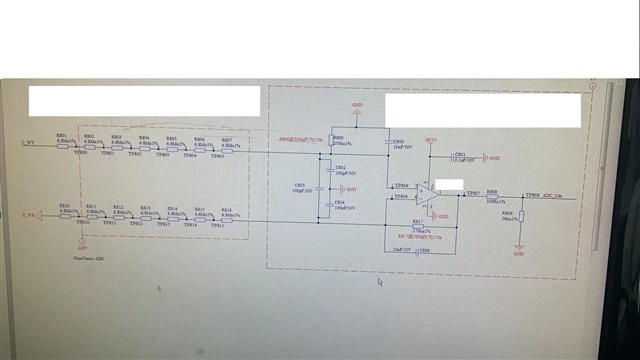Other Parts Discussed in Thread: TLV314,
Hi,
I'm using the circuit below to sense the DC BUS voltage, ADC_Udc=(135/23919)*Udc, ADC_Udc is fed to the ADC of MCU.
The DC bus voltage ranges from 50V to 500V.

I compare the actual DC bus voltage and the DC bus voltage calculated from ADC results, the difference value is the error.
When I use TLV314 in the circuit, the error is 0.09V at 50V DC BUS, and 0.44V at 500V DC BUS.
When I use OPA335 in the circuit, the error is 0.25V at 50V DC BUS, and 2.03V at 500V DC BUS.
But OPA335 is a precision amp and its offset is much lower.
Why the error for OPA335 in this circuit is even larger?
And why the error increases as long as the DC bus increases?

